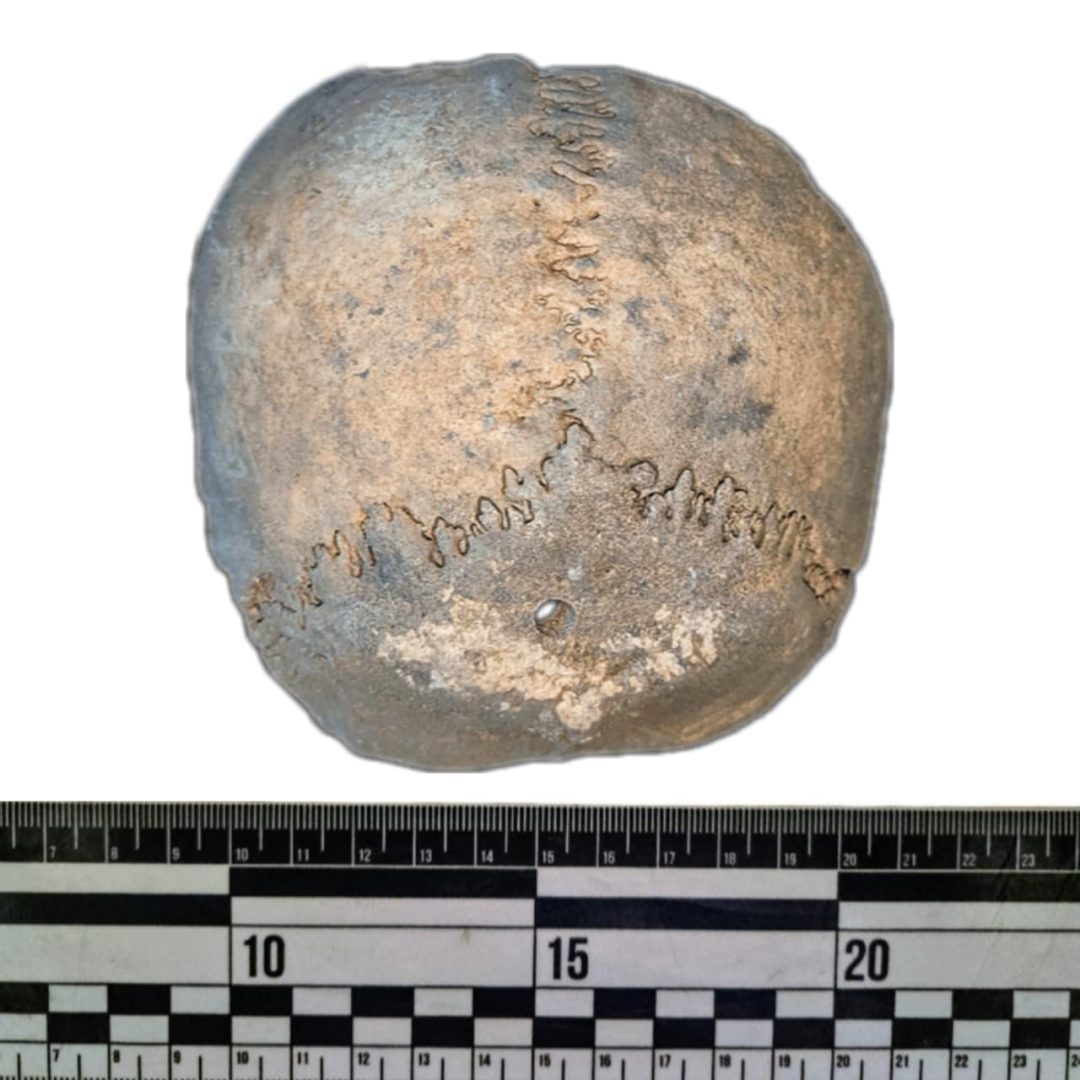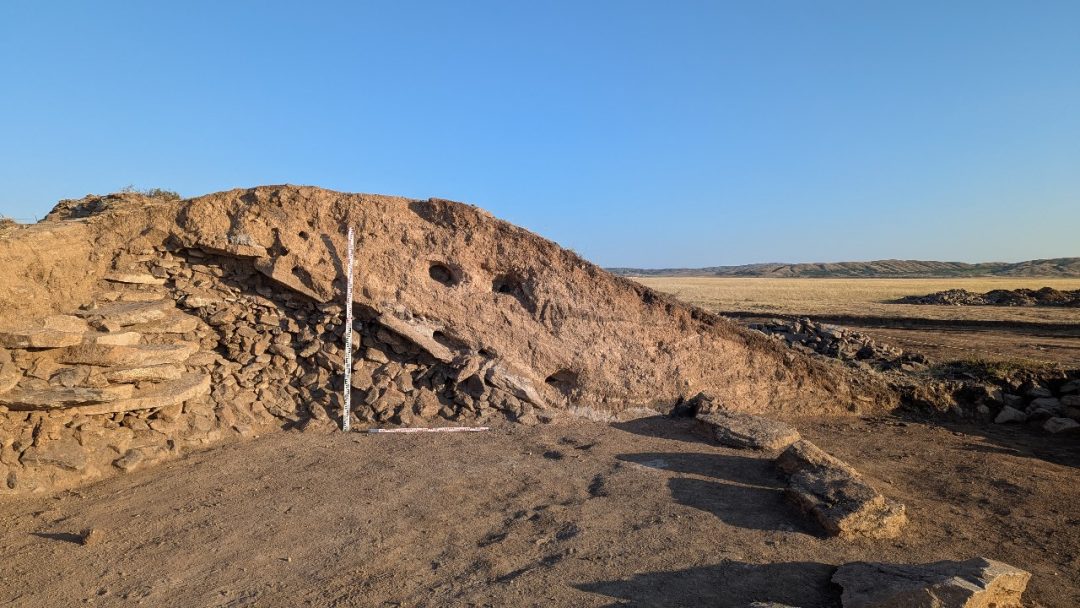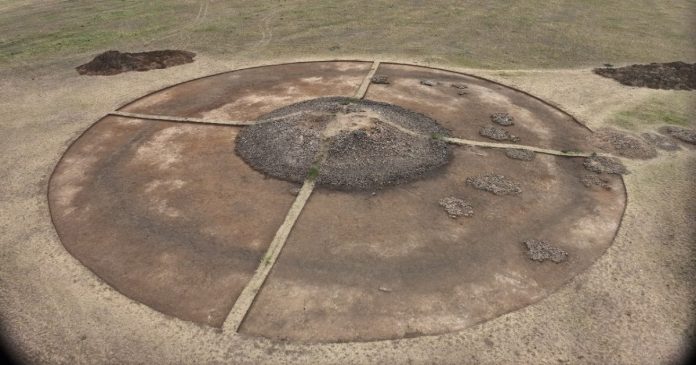A Major Discovery in Central Kazakhstan
Archaeologists from the Karaganda Regional Center for the Preservation of Historical and Cultural Heritage made a groundbreaking discovery at the Baykaska-2 burial mound in the Shet District. The site is part of the Taldy Historical-Archaeological Park, a place known for its nomadic heritage and monumental burials.
During the latest excavation season, researchers uncovered more than a dozen burials. They also found a skull fragment with a hole in the forehead, sparking questions about ancient medicine and ritual practices.
A Royal Mound Built for the Elite
The Baykaska-2 mound stands approximately three meters tall—an indication of elite status in ancient Central Asian societies. Beneath the mound, archaeologists discovered a stone sarcophagus covered with massive slabs, a type of construction reserved for high-ranking individuals.
“This mound was significant due to its scale and complexity. The larger the mound, the higher the social rank of the buried individual,” explained expedition leader Erlan Amirov.
The tomb’s structure was remarkably sophisticated: builders encased the deceased in a stone coffin, layered it with slabs forming an arch, and covered the surface with gravel, peat, and soil—then faced the exterior with cut stone to create a monumental appearance.
A Skull with a Mysterious Hole
Inside the mound, archaeologists found a skull fragment with a deliberate perforation in the forehead. Specialists are debating whether it represents ancient cranial surgery (trepanation) or a ritual act marking the deceased’s special status.

Such evidence could indicate that ancient steppe cultures possessed advanced anatomical knowledge or practiced symbolic body modification as part of funerary rites.
Artifacts Reveal Ancient Nomadic Life
The burial complex yielded human and animal bones, bronze and horn arrowheads, and decorated pottery. In the western section, researchers identified 11 additional burials believed to date to the Late Middle Ages, suggesting that later nomads reused the sacred site for their own interments—a process known as landscape sacralization.

Scientific Analysis Underway
Select bones are being sent for radiocarbon dating in Lithuania, while the skull fragment will undergo analysis in Almaty by Kazakh anthropologists. Researchers hope to determine the mound’s precise age and cultural context, linking it to broader nomadic traditions across the Eurasian steppe.
“Archaeological monuments like these are priceless,” Amirov emphasized. “They help us trace cultural evolution and better understand the beliefs and skills of ancient nomadic civilizations.”
You may want to read this: Saka-Era Burial Artifacts Unearthed in Southern Kazakhstan

